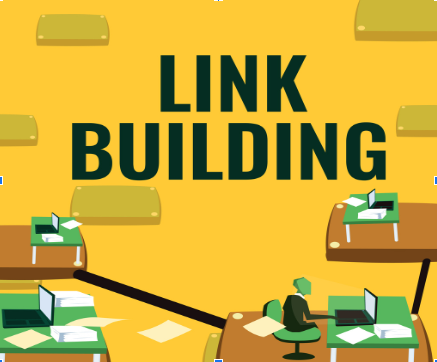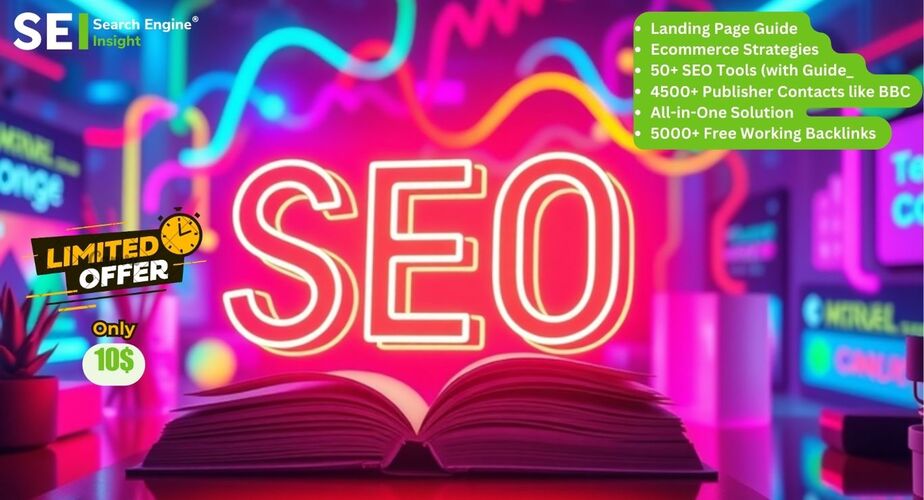Top Link-Building Mistakes to Avoid in 2025
Understanding user intent, create top-notch content, and staying up to date with ever-changing tech algorithm modifications are not just buzzwords but the very essence of link-building in 2025. These are the key components that can make or break your link-building strategy.
Even seasoned link-building specialists are susceptible to several typical technical pitfalls that keep websites from realizing their full potential. By avoiding these typical link-building errors, you can improve the functionality of your website, establish its legitimacy, and raise its rankings. This guide lists the top link-building blunders of 2025 and offers fixes to assist you in developing a long-term link-building plan.
Why Link-Building Remains Critical in 2025 ?
Link building, often overlooked but crucial, is one of the most effective strategies for getting reputable specialty websites to recommend your website, especially when it is focused on white hat link building strategies. It’s not just the quantity of links that matters but also the quality and relevance of the links. With the help of a link-building agency, you can significantly boost your website’s credibility and search rankings.
You can create a striking and illustrative backlink profile using an efficient link acquisition method. Depending on how strong your link profile is, your website might wow Google’s algorithm and rank better.
Top Link-Building Mistakes to Avoid
1. Focusing on Quantity Over Quality
The idea that rapidly obtaining a significant number of backlinks can raise search rankings is a common misunderstanding regarding link development. The quality of backlinks is more important to Google and other search engines than their quantity.
A few high-quality connections from reliable websites might have a significant positive effect on your SEO. Conversely, an excessive number of poor-quality links may be harmful. Ensure no abrupt or unusual surges exist in link acquisition; your backlink profile should develop organically.
Uncertain about how to find possibilities for high-quality links? Keep in mind these pointers:
- Seek out websites with a lot of traffic and domain authority.
- Ensure the websites you refer to are pertinent to your industry or niche.
- Please verify that the website doesn’t use spam by looking at its backlink profile.
- Look for websites with social media shares and comments indicating active interaction.
2. Ignoring Link Diversity
Adopting a varied link-building approach is not just a strategy but a necessity. Relying on one or two link-building strategies can hamper the potential for backlinks to your website. Strategies like content marketing, influencer outreach, broken links, and guest blogging in SEO can maximize the effectiveness of your link-building approach.
This ensures that you won’t be left hanging if one strategy or source doesn’t work out and keeps the backlink party going with a steady stream of high-quality links.
3. Buying Links or Engaging in Black-Hat Tactics
Have you ever seen a website with a blatantly irrelevant or spammy backlink profile? It’s an obvious indication that the website isn’t worth linking to. However, how can you tell if a website’s link profile is reliable?
One method to accomplish this is to examine the website’s toxic score on SEMRush or spam score on Moz. These tools will help you determine the website’s credibility and the health of its backlink profile.
Many spammy or irrelevant backlinks pointing to a website are a significant warning sign. This indicates that the website employs black-hat techniques to raise its ranks and does not invest in high-quality link-building methods. You risk adding extremely harmful backlinks to your website if you link them from these websites.
Conversely, a trustworthy website will have a clean and well-organized link profile. To preserve the integrity of its backlink profile, it either eliminates or disavows harmful backlinks on Google.
4. Neglecting Anchor Text Optimization
The text that can be clicked in a hyperlink is called anchor text. Over-optimized anchor text, used repeatedly, might result in a search engine penalty. Use a range of anchor text instead, such as brand names, keywords, and organic phrases.
When varying your anchor text for backlinks, keep the following advice in mind:
- Employ a combination of branded, generic, exact match, and partial match anchor text.
- Make sure the stuff your anchor text connects to is pertinent to it.
- Ensure your anchor text flows smoothly inside your content, and avoid cluttering it with keywords.
5. Ignoring Broken Links or Unclaimed Mentions
In this dynamic digital environment, it’s critical not to take your links for granted. It is essential to regularly check and analyze your website’s backlink data to identify problems, such as broken or missing connections, and assess the effectiveness of your link-building efforts.
Robust tools like Ahrefs, Moz, and Google Search Console can effectively monitor and analyze your backlink data, giving you a sense of security and control over your website’s health. By closely monitoring your links, you can maintain a strong online presence and ensure your website stays powerful.
Strategies for Safe and Effective Link-Building in 2025
1. Leveraging Content Marketing
Content marketing is a strategic marketing method focusing on producing and disseminating consistent, quality, and relevant material, such as blogs, UGC, infographics, etc to draw in and hold onto a well-defined audience. This is to, eventually, encourage profitable consumer behavior.
You may expand your reach and develop a brand identity with content marketing. You can create value by creating content on issues you and your potential customers are passionate about. You initiate conversations in a way that seems more like a friendship than a sales pitch, rather than waiting for people to call you or walk through the front door.
Even the most informal content has a sales objective in the end. It alters how companies interact with their clientele and how the sales funnel works.
2. Building Relationships for Natural Links
Because natural links are challenging to buy or manipulate, search engines like Google see them as essential votes of confidence. The ability of a website to rank highly for specific keywords and phrases can be greatly impacted by this.
You can obtain natural links only by producing outstanding content, building solid connections within your business, and positioning your brand as a thought leader in its field. The following explains why content is crucial for obtaining worthwhile backlinks:
- Adds Value: Content that is useful, interesting, and well-researched offers the target audience real value.
- Promotes Sharing: Social media and blogs are more likely to provide original, high-quality content that solves common problems or offers insights, raising its visibility and backlink-building potential.
- Encourages Outreach: Strong content is one of the significant metrics for actively marketing through influencer outreach, guest posting, or digital PR efforts focused on obtaining backlinks.
- Remains Relevant: Although strategies may evolve, providing continuously high-quality material guarantees that your website will continue to be regarded as a reliable resource deserving of links over time.
3. Monitoring and Maintaining Link Health
Off-page SEO techniques ensure a strong link profile because they tell search engines that your website is reliable, pertinent, and authoritative. However, creating and sustaining a strong link profile is an ongoing process that calls for frequent observation, evaluation, and action. The following advice will help you keep an eye on the condition of your links:
- Examine your current link profile for problems that could affect it, such as broken, irrelevant, spammy, or low-quality links.
- Any harmful links you discover during your audit should be disavowed. Doing so prevents them from affecting your link profile by instructing Google to disregard them when assessing your website.
Future Trends in Link-Building
In 2025, link-building services will emphasize natural link acquisition and UGC. UGC (user-geenrated content), which reflects actual user activity, will generate organic links. Examples of this include reviews, testimonials, and forum comments.
Concurrently, there will be a move towards obtaining contextual links from high-authority domains as search engines prioritize trustworthiness and relevancy above volume. Techniques like utilizing influencer partnerships and specialized alliances will become more popular.
AI-powered solutions will also help locate worthwhile link opportunities, guaranteeing that moral behavior aligns with changing algorithms. For long-term SEO career success, the emphasis will continue on quality, relevance, and building genuine relationships.
Conclusion
In 2025, successfully developing links will depend on following ethical guidelines, focusing on quality rather than quantity, and regularly auditing backlinks. Valuable content, sincere partnerships, and contextual, high-quality links from reliable sources will fuel long-term SEO success.




